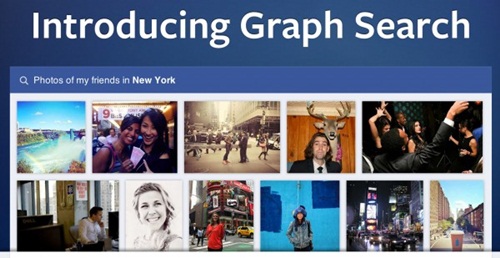
If you are spending most of your time on Facebook you might as well also carry out your daily dose of searches on the social networking website. Almost every individual and every business that is on the Internet is also there on Facebook. So that is why Facebook is coming up with its own search engine called Graph Search. How is it going to be different from conventional search engines like Google?
Facebook is people based. In the name of improving user experience Facebook is able to extract as much information from its users as possible. It knows how old you are, where you live, where you work, which school and university you attended, with whom you are hanging out, who is your spouse or brother or sister, which foods you like to eat, which books you like to read and which movies you have recently seen or would like to see. This kind of detailed information is not available to conventional search engines, although with Google Plus Google is trying to break that barrier. In fact Google is changing its ranking algorithm in such a manner that people will be forced to use Google Plus if they want to improve their search engine rankings as well as search engine traffic.
Anyway, back to the Facebook Graph Search. Facebook is all about wanting to know what your friends and relatives are doing. You trust your friends, at least more than the search engine ranking algorithms. The search results that you get on Facebook will be totally different from those appearing on Google simply because the Facebook search results will be based on the preferences of your friends.
Take for instance, you want to read some sci-fi books that your friends have recently read. On Graph Search you will look for the following:
“Sci-fi books my friends like”
Or if you want to find a good coffee shop in London (I know, quite a broad search) you can search for
“London coffee shops my friends like”
Or if you want to find out something more specific
“London coffee shops my female friends like”
Or
“London coffee shops my friends have been to”
You can replace London with any other city, and you can replace coffee shops to any other business.
The basic idea behind Facebook Graph Search is that it is based on your friends’ recommendations and preferences. It is totally human-based. Most of the data has been submitted by people themselves and hence there is little chance of error.
Optimizing your content for Facebook Graph Search
Relevance and quality, as usual, are always relevant. Content marketing that also involves social media marketing, should also take care of how you create content on social networking websites, in this case, Facebook. What language you use when you post your updates can alter the way you appear on Facebook search results. It is based on natural language processing as you might have experienced in Apple’s Siri.
Remember that your presence on Facebook becomes popular when people “like” your content or share it on their own timelines. For example, in order to find my services people may look for “content writer my friends like”. To make sure I appear in these search results, I need to make sure that enough number of people, and right type of people, like my Facebook page or my Facebook updates.
In order to optimize your content for Facebook Graph search
- Use the language people use (if they are looking for a content writer, then actually use this expression while creating your content)
- Post relevant content so that people “like” it and share it
- Use social buttons on your website so that people can easily post your links on their own timelines without having to leave your website or blog
- Encourage people to leave comments on your website using Facebook
- Create great content on your website or blog so that people have a reason to promote your links and talk about your website or blog
- Establish yourself as an authority
As you can see, the same rules that apply to creating content in general also apply to optimizing your content for Facebook Graph search. Be regular, stick to quality and relevance and give people a reason to appreciate your presence on Facebook.

 Creating a Facebook page is a great way to build a community around your product, brand or identity. More than 99% Fortune 500 companies have a Facebook presence (it differs from company to company how much they engage their customers and clients via their pages).
Creating a Facebook page is a great way to build a community around your product, brand or identity. More than 99% Fortune 500 companies have a Facebook presence (it differs from company to company how much they engage their customers and clients via their pages). Eventually it all boils down to what sort of content you post on your Facebook page. Remember that you have to engage your audience. Your content must be inspiring, informative, provocative and thought-provoking. Since they have liked your page they expect you to say something authoritative, knowledgeable and useful. You are like a thought leader. They look up to you.
Eventually it all boils down to what sort of content you post on your Facebook page. Remember that you have to engage your audience. Your content must be inspiring, informative, provocative and thought-provoking. Since they have liked your page they expect you to say something authoritative, knowledgeable and useful. You are like a thought leader. They look up to you.